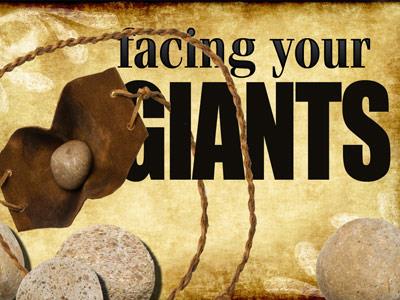-
The Victorious Sword
Contributed by Philip Harrelson on Nov 28, 2017 (message contributor)
Summary: One of David's seven swords that used him to advance in God's purpose.
1 Samuel 17:49-51 KJV And David put his hand in his bag, and took thence a stone, and slang it, and smote the Philistine in his forehead, that the stone sunk into his forehead; and he fell upon his face to the earth. [50] So David prevailed over the Philistine with a sling and with a stone, and smote the Philistine, and slew him; but there was no sword in the hand of David. [51] Therefore David ran, and stood upon the Philistine, and took his sword, and drew it out of the sheath thereof, and slew him, and cut off his head therewith. And when the Philistines saw their champion was dead, they fled.
I. INTRODUCTION—THE SEVEN SWORDS OF DAVID
-Several months ago, I was probing through the life of David and noticed a key word that seemed to come up at various points in his life. It was the word “sword.”
-If you look carefully, you will discover that there were actually seven swords in the life of David:
• The Unproven Sword—The one offered by Saul (1 Samuel 17:39).
• The Victorious Sword—The second sword came on the same day (1 Samuel 17:51).
• The Sword of the Covenant—The third sword came about on a covenant between David and Jonathon (1 Samuel 18:4). It would have far-reaching effects into the life of Mephibosheth.
• The Old Sword—One preserved in a place of worship (1 Samuel 21:9) that brought him new victory.
• The Restrained Sword—The fifth sword was restrained and it saved Nabal, a churlish man (1 Samuel 25:13).
• The Sword of Subterfuge—This sword is mentioned as the one that killed Uriah (2 Samuel 11:25; 12:9-10).
• The Sword of a Son—The seventh sword is one David had to flee from. It was the one that probably troubled him the most because it was held by his son, Absalom (2 Samuel 15:14).
-All of these swords in David’s life are separate sermons in themselves. A lot of spiritual lessons come to us when we meditate on the Word of God. In fact, I am of the thought that David’s swords were placed in the Word of God as lessons for all of us who are inclined to hearing them.
-There is probably a pretty good chance that most of us will have the opportunity to interact with all seven of David’s swords in our own spiritual walk.
II. DAVID AND HIS GIANT
-Suffice it to say that this is probably one of the most famous of all Bible stories, David and Goliath. I have a feeling that most all of us have been in the position a time or two when we felt like we were the underdog.
-David was the classic underdog and there is something in all of us that wants to pull for him. So I am not going to work through all the comings and goings of David and his giant-killing. It was one Israel’s most important victories that they would achieve and it was God’s way of pushing David to the forefront.
A. Old Testament Typology
-There is something about looking in Scripture and making the connection to the New Testament from the Old Testament. The battle with Goliath gives us another opportunity to see that.
-If you can picture David as a type of Jesus Christ and Goliath as the devil and the work of sin there is much that can bring the gospel to this story.
• The children of Israel in a battle against a formidable enemy—in our times a church that is arrayed in a battle against the world, the flesh, and the devil.
• Goliath appeared invincible—there have been times that our struggle with the devil and with sin that they appeared invincible.
• David as a picture of the Lord who overcame Satan at Calvary—because Jesus Christ is the head of the church and has overcome the devil, we may also follow in the same pattern of victory.
• David was anointed before he ever got to the battle—when we received the Holy Ghost there was an anointing that was on us before we ever got to the battle. You cannot do David’s work unless you have David’s anointing. You cannot have spiritual authority until you have spiritual anointing!
• David cut off Goliath’s head with his own sword—Jesus Christ, through death, destroyed him that had the power of death (Heb. 2:14).
-There are other various pictures to bring from this passage:
• Samuel—The picture of a spiritual leader who has the mind of God.
• The seemingly, overwhelming odds of evil arrayed against the good.
• Goliath—The depiction of the devil.
• The Philistines and the armor-bearers of Goliath—A picture of the demonic hordes that are in a position against the people of God.

 Sermon Central
Sermon Central



